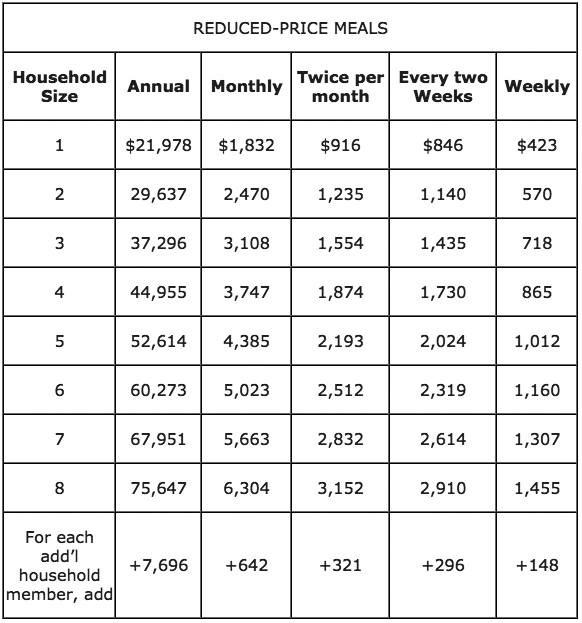U.S. Department of Agriculture nutrition programs are administered by the Office of Superintendent of Public include the Instruction National School Lunch Program, School Breakfast Program and Special Milk Program, and offer Washington school students free and reduced-price meals to students in need.
The application process for participation in school meal programs is simple and confidential, program officials say. Application packets are sent to all households with students at the beginning of the school year, though applications may be submitted any time during the school year.
Households that experience a change in income due to job loss or other circumstances are encouraged to apply. Households with income levels below certain thresholds are encouraged to apply for any or all of the programs listed above. The application packet provides instructions and directions on where the application should be sent.
Applications will be reviewed and a determination made within 10 operating days of receipt of the application. Households denied eligibility can appeal the decision by contacting their school.
Students receiving help through Temporary Assistance for Needy Families (TANF) or the Basic Food Program — as well as all other students in the same household — automatically qualify for free meals. The Department of Social and Health Services provides OSPI with a list of children who receive these services to facilitate automatic eligibility. Households notified of their children’s eligibility must contact the school if it chooses to decline the free meal benefits.
Foster children are eligible for free meal benefits. Children placed in foster care by DSHS also are included in the list provided to OSPI. In households where foster children reside, all other students in the household may be eligible for free or reduced price meals based on household size and income. In these situations, households may submit an application.
Homeless and migrant students, households taking part in Food Distribution Program on Indian Reservations and students in Head Start and the Early Childhood Education and Assistance Program are eligible for free meals. Contact your child’s school for more information.
Eligibility lasts from the date of approval up to the first 30 operating days of the next school year or until a family contacts the school or district.
Households needing assistance with application materials in languages other than English should contact their school. There will be no discrimination against limited English speaking households in the school meal programs.
The income eligibility guidelines listed below are used to determine the eligibility of children to receive free or reduced-price meals or free milk. Washington State legislation pays the cost of lunch for public school students eligible for reduced-price meals in grades K‒3 and the cost of breakfast for public school students eligible for reduced-price meals in grades K-12.
If you have questions about eligibility, contact your child’s school.
Schools with fewer than 25 percent of the enrolled K-4 students who qualify for free or reduced-price meals are not required to operate the National School Lunch Program. In addition, schools with fewer than 40 percent or less of enrolled students who qualify for free or reduced-price meals are not required to operate the school breakfast program.



